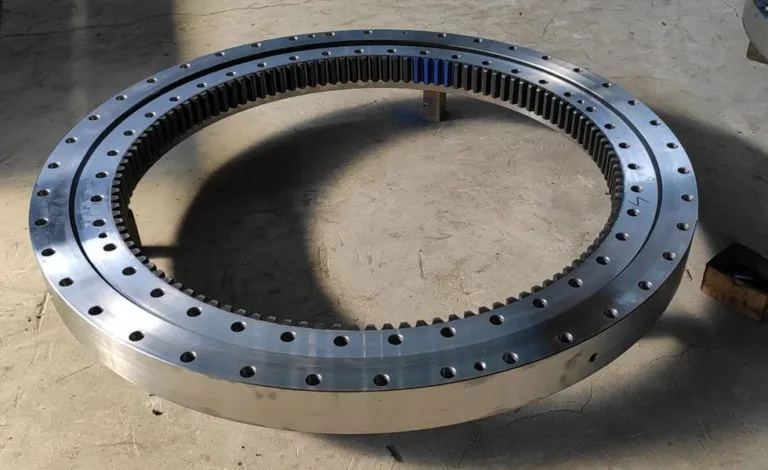-
Cangzhou Yulong Steel Co., Ltd.
-
Phone:
+86 13303177267 -
Email:
admin@ylsteelfittings.com
- English
- Arabic
- Italian
- Spanish
- Portuguese
- German
- kazakh
- Persian
- Greek
- French
- Russian
- Polish
- Thai
- Indonesian
- Vietnamese
- Zulu
- Korean
- Uzbek
- Hindi
- Serbian
- Malay
- Ukrainian
- Gujarati
- Haitian Creole
- hausa
- hawaiian
- Hebrew
- Miao
- Hungarian
- Icelandic
- igbo
- irish
- Japanese
- Javanese
- Kannada
- Khmer
- Rwandese
- Afrikaans
- Albanian
- Amharic
- Armenian
- Azerbaijani
- Basque
- Belarusian
- Bengali
- Bosnian
- Bulgarian
- Catalan
- Cebuano
- China
- China (Taiwan)
- Corsican
- Croatian
- Czech
- Danish
- Esperanto
- Estonian
- Finnish
- Frisian
- Galician
- Georgian
- Kurdish
- Kyrgyz
- Lao
- Latin
- Latvian
- Lithuanian
- Luxembourgish
- Macedonian
- Malgashi
- Malayalam
- Maltese
- Maori
- Marathi
- Mongolian
- Myanmar
- Nepali
- Norwegian
- Norwegian
- Occitan
- Pashto
- Dutch
- Punjabi
- Romanian
- Samoan
- Scottish Gaelic
- Sesotho
- Shona
- Sindhi
- Sinhala
- Slovak
- Slovenian
- Somali
- Sundanese
- Swahili
- Swedish
- Tagalog
- Tajik
- Tamil
- Tatar
- Telugu
- Turkish
- Turkmen
- Urdu
- Uighur
- Welsh
- Bantu
- Yiddish
- Yoruba

Nov . 27, 2024 18:08 Back to list
HDPE Concentric Reducers for Reliable Pipeline Connections and Efficient Fluid Flow Management
Understanding HDPE Concentric Reducers A Comprehensive Overview
In the realm of plumbing and piping systems, the efficiency and reliability of the materials used are of paramount importance. One such material that has gained significant traction in various industrial applications is High-Density Polyethylene (HDPE). In this article, we will delve into the specifics of HDPE concentric reducers, exploring their definition, applications, benefits, and installation considerations.
What is an HDPE Concentric Reducer?
An HDPE concentric reducer is a type of fitting used in pipe systems to connect pipes of different diameters, allowing for a seamless transition from a larger diameter to a smaller diameter, or vice versa. The term concentric refers to the design of the reducer, which ensures that the centerline of both pipe sections remains aligned. This geometric alignment is crucial for maintaining flow efficiency and reducing turbulence, ultimately minimizing the potential for pressure drops within the system.
Applications of HDPE Concentric Reducers
HDPE concentric reducers are widely used across various sectors. Their robustness and corrosion resistance make them ideal for applications in
1. Water Supply Systems Often employed in municipal and agricultural water distribution networks, these reducers facilitate the efficient transport of water from larger to smaller piping networks.
2. Wastewater and Sewage Systems HDPE's resistance to chemical degradation allows for reliable waste removal in both residential and industrial settings.
3. Oil and Gas Industry The durability of HDPE makes these reducers suitable for the transportation of hydrocarbons and other chemicals, where corrosion resistance is a significant advantage.
4. Irrigation Systems In agriculture, HDPE concentric reducers help in transitioning between different pipe sizes, ensuring a consistent flow of water to crops.
5. Construction Used in drainage and venting systems, they provide versatility in managing fluid dynamics within buildings and structures.
Benefits of Using HDPE Concentric Reducers
The popularity of HDPE concentric reducers can be attributed to several advantages
hdpe concentric reducer

1. Corrosion Resistance Unlike metal fittings, HDPE does not corrode, making it suitable for applications where chemical exposure is a concern.
2. Lightweight and Easy to Handle HDPE reducers are considerably lighter than their metal counterparts, which simplifies transportation and installation processes.
3. Cost-Effectiveness The overall cost of HDPE fittings is often lower when considering their lifespan and the reduced need for maintenance compared to traditional materials.
4. Flexibility and Versatility HDPE can be manufactured in various sizes and thicknesses, allowing for customization in different applications.
5. Environmentally Friendly HDPE is recyclable, which aligns with modern sustainability practices and reduces the environmental footprint of construction projects.
Installation Considerations
While the installation of HDPE concentric reducers is generally straightforward, there are some key considerations
1. Proper Alignment Ensuring that both pipes are properly aligned is critical to prevent stress on the fitting, which can lead to leaks or failure.
2. Thermal Expansion HDPE expands and contracts with temperature fluctuations. Therefore, allowances must be made in the installation design for temperature changes, particularly in environments with extreme temperature variations.
3. Welding Techniques HDPE fittings are typically joined using heat fusion methods. Familiarity with these welding techniques is essential for achieving a strong, leak-proof bond.
4. Pressure Ratings Always confirm that the selected reducer is appropriate for the pressure ratings of the piping system in which it will be used.
Conclusion
HDPE concentric reducers represent an essential component in modern piping systems, offering a blend of durability, versatility, and cost-effectiveness. Their use across various industries underscores their importance in fluid management and distribution applications. With proper installation and maintenance, these fittings can significantly contribute to the efficiency and reliability of any piping system. As industries continue to seek sustainable and efficient solutions, HDPE products are likely to remain at the forefront of piping technology.
Latest news
-
ANSI 150P SS304 SO FLANGE
NewsFeb.14,2025
-
ASTM A333GR6 STEEL PIPE
NewsJan.20,2025
-
ANSI B16.5 WELDING NECK FLANGE
NewsJan.15,2026
-
ANSI B16.5 SLIP-ON FLANGE
NewsApr.19,2024
-
SABS 1123 FLANGE
NewsJan.15,2025
-
DIN86044 PLATE FLANGE
NewsApr.19,2024
-
DIN2527 BLIND FLANGE
NewsApr.12,2024
-
JIS B2311 Butt-Welding Fittings LR/SR 45°/90° /180°Seamless/Weld
NewsApr.23,2024











